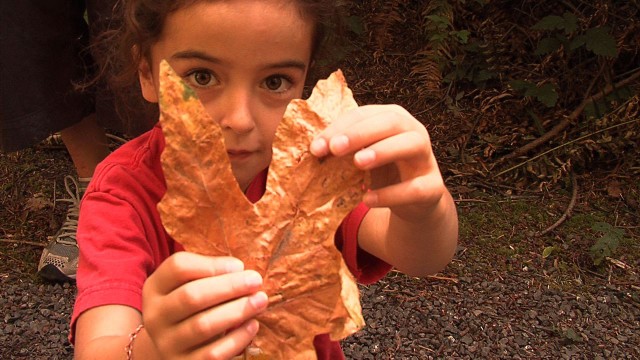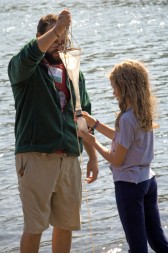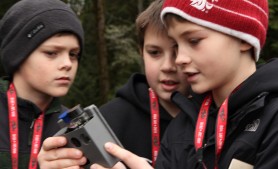
How Do Scientists Think?
Field Notes: Clancy Wolf, IslandWood
What do you think of when you think of “science?” Do you get all nervous and think about chemistry class and trying to get the right answers on the labs?
Forget the word “science” for a minute, and go back in your memory. Can you remember a time when, say as a young child, you played in a field, beach or barn? Maybe you spent a whole day figuring out how to skip a rock across a lake. Or what exactly you had to do to stay balanced on your two-wheeled bicycle. Those memories are what “science” is all about – asking questions, and working out ways to answer them.
As far as “The Scientific Method” goes, I’ll borrow a line from Pirates of the Caribbean: “They’re more like guidelines.” It turns out that when researchers take a look at what professionals in science really do, they do several things – but not in any specific sequence. Scientists
- Ask questions,
- Develop and use models,
- Plan and carry out investigations,
- Analyze and interpret data,
- Use mathematics and computational thinking,
- Construct explanations,
- Engage in argument from evidence, and
- Obtain, evaluate, and communicate information.
But - and this is where the inner pirate comes out - they jump around among these practices, and even ignore some at times.
Scientific Thinking and the New Standards
As a result of this new understanding of how scientists work, a better understanding of how students learn, and major advancements in our collective scientific knowledge — we are being forced to rethink how we do science education.

Over a two year period, twenty six states worked together with a 41-member writing team and other partners to develop a set of “standards” - the science practices and content that all K-12 students should master in order to be fully prepared for college, careers and citizenship. These Next Generation Science Standards were published just this April. (Note: The last major effort to define science education standards was in 1996 when the National Research Council developed the National Science Education Standards (NSES) which have influenced science education in many states.)
